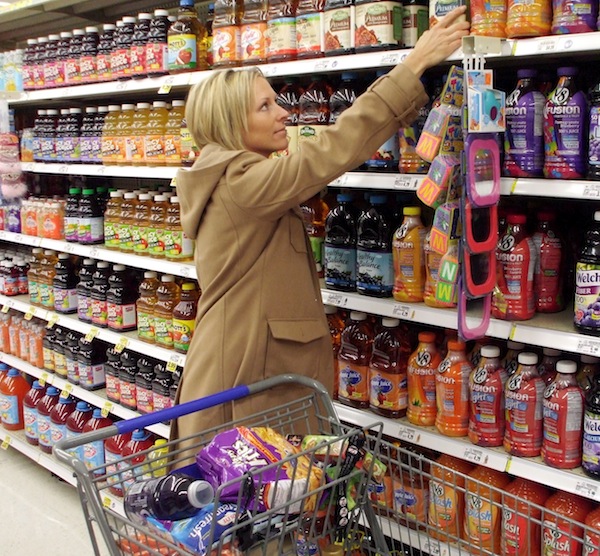One of the most widely circulated pieces of advice for effective (meaning healthy) grocery shopping is to steer around the perimeter of the store where nutritious foods are traditionally on display. But food makers and the stores that sell their products aren’t happy just to sit still and not try to influence your buying habits.
Food ad spending in the U.S. rests at about $7 billion a year. Not to mention, the Newspaper Association of America reports about $1.5 billion is spent by food companies each year in newspapers and mailed circulars.
Billion with a “b” comes with a pretty hefty influence. So it shouldn’t come as a surprise that a UK study found that people alter their meal plan according to what products their grocery store is promoting.
Back Stateside, a new study evaluated the types of foods promoted by supermarkets chains and their corresponding share of advertising space in 2024 sales circulars. The food group that was given the heaviest promotion on the front page of supermarket sales circulars was meat with about 40 percent of the ads. Fruits and vegetables were each given about 10 percent of the sampled advertising space.
Surprisingly, at least to me, sweets only got 10 percent of the ad space, mostly in the form of sugary drinks.
Then the study starts to get really interesting when you realize there’s a difference with how the foods are marketed in different states, with each having their own level of obesity rates. Is there a correlation between obesity rates and the types of foods marketed? Absolutely!
In Colorado and Massachusetts, two of the healthiest states in the Union with “only” about 20 percent obesity rates, supermarkets give fruits significantly more ad space than in more obese areas. States with obesity rates over 30 percent were given more ad space to sugary drinks. In southern states, supermarkets advertise sweets with as much as six times the ad space as other regions.
It’s a “chicken or the egg” debate… are people more obese in these areas because they simply eat what is most heavily marketed to them, or are these items heavily marketed to them because it’s what they demand? Regardless, the end result is alarming just the same.
Also Read:
Disney’s Ban on Junk Food Ads is a Game Changer

